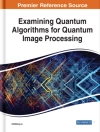This book focuses on practical implementation details, telecommunication techniques, security and technology challenges and approaches to implementing quantum technology in modern telecommunication systems. The authors use their extensive practical academic and industrial experience in network technologies and provide details from international projects in quantum cryptography in which they actively participate. Using a variety of examples, analogies, illustrations, tables, and features from practical quantum network realizations, the authors provide a unique view of quantum technology from an engineering telecommunication standpoint, allowing the reader to identify the advantages and challenges of quantum technology.
This book also addresses challenges posed by quantum technology such as network organization, passive and active eavesdropping, and future trends in QKD such as Software Defined Networking (SDN) with QKD and application QKD in 5G networks. It is conceived through eight chapters by treating the following thematic units separately: Fundamentals of Quantum Key Distribution, Qo S architecture/mode, Qo S MAC layer, Qo S signaling techniques for key management and session negotiation purpose and Qo S routing protocols that minimize the consumption of key material through the equitable utilization of network resources when finding an optimal path.
Through numerous information on practical solutions, simulation examples, illustrations, and analysis, readers can easily distinguish the specificity of quantum technology and understand the challenges and methods of practical implementation of quantum cryptography in common telecommunications standards. Researchers working in quantum technology and applied networking security as well as advanced-level students studying computer science and electrical engineering will benefit from this book. Professionals working within these related fields will also benefit from this book.
Inhaltsverzeichnis
Fundamentals of Quantum Key Distribution.- Quality of Service Requirements.- Quality of Service Architectures of Quantum Key Distribution Networks.- Quality of Service Media Access Control of Quantum Key Distribution Networks.- Quality of Service Signaling Protocols in Quantum Key Distribution Networks.- Quality of Service Routing in Quantum Key Distrubition Networks.- From Pint-to-Point to End-to-End Security in Quantum Key Distribution Networks.- Modern Trends in Quantum Key Distribution Networks.
Über den Autor
Dr. Miralem Mehic received his Ph.D. degree in telecommunications from the VSB-Technical University of Ostrava (Czechia). Also, he studied at the AGH University of Science and Technology, Krakow, Poland, Alpen-Adria-Universitat Klagenfurt, Austria and Austrian Institute of Technology (AIT) in Department of Digital Safety & Security Business Units – Optical Quantum Technology, Vienna & Klagenfurt, Austria. Miralem is the author of the unique QKD network simulator QKDNETSIM (www.qkdnetsim.info). His field of research is related to the quality of service and management of QKD networks with a focus on real-time traffic and the utilization of network resources. He is involved in several international projects. He is the national principal investigator of EU H2020 OPENQKD and the NATO SPS QUANTUM5 projects. Since 2019, Miralem is the Head of Department of Telecommunications at the University of Sarajevo, Bosnia and Herzegovina.
Dr. Stefan Rass is a full professor for Security at the LIT Secure and Correct Systems Lab at the Johannes Kepler University Linz, and an associate professor at the University of Klagenfurt, Austria. He has a double master degree in Computer Science and Technical Mathematics, and a Dr. in mathematics (with a focus on security). His research interests include general system security, in particular, applications of quantum cryptography and information-theoretic security. He authored numerous papers on applied quantum cryptography, the complexity of network design and network provisioning towards quality-of-security, as well as the book “Cryptography for Security and Privacy in Cloud Computing”, published by Artech House in 2013. Recent research focuses on security based on game and decision theory, which originated from the security analysis of quantum networks. This theory has been published in the “Game Theory for Security and Risk Management: From Theory to Practice”, published by Springer Birkhäuser, DOI: 10.1007/978-3-319-75268-6.
Dr. Peppino Fazio received a graduate degree in Computer Science in May 2004 and a Ph D in Electronics and Telecommunications Engineering in January 2008, both from the University of Calabria, Cosenza, Italy. From June 2004, he was at the Telecommunications Group, University of Calabria. From May 2008 to September 2008, he was a Visiting Researcher with the UPV of Valencia (Spain), GRC Research Group. Today he is an Assistant Professor at the Ca’ Foscari University (DSMN) and senior researcher at the VSB-TUO in Czechia. He has authored and co-authored more than 115 papers for international journals and conference proceedings. His research interests include IP Qo S architectures, adaptive wireless networks, mobile ad hoc networks, quantum key distribution networks, and vehicular ad hoc networks. He has been a member of various startup companies and is recipient of international awards (e.g. the Intel Business Challenge Award in 2013).
Dr. Miroslav Voznak received the Ph D. degree in telecommunications from the Faculty of Electrical Engineering and Computer Science, VSB – Technical University of Ostrava, Czechia, and completed his habilitation in 2002 and 2009, respectively. He was appointed Professor of Electronics and Communication technologies in 2017. He is author and co-author more than 300 results indexed in Wo S and over the hundred industrial outcomes incl. patents, utility models or certified metodologies. Since 2013, he has been leading the Dept. of Telecommunications and since 2017, also big data analysis lab, both in VSB-Technical University of Ostrava. His research interests include wireless networks, network security, quality of service and knowledge datamining in networks. According to the Stanford University study released in 2021, he is one of the World’s Top 2% scientists in Networking and Telecommunications.












